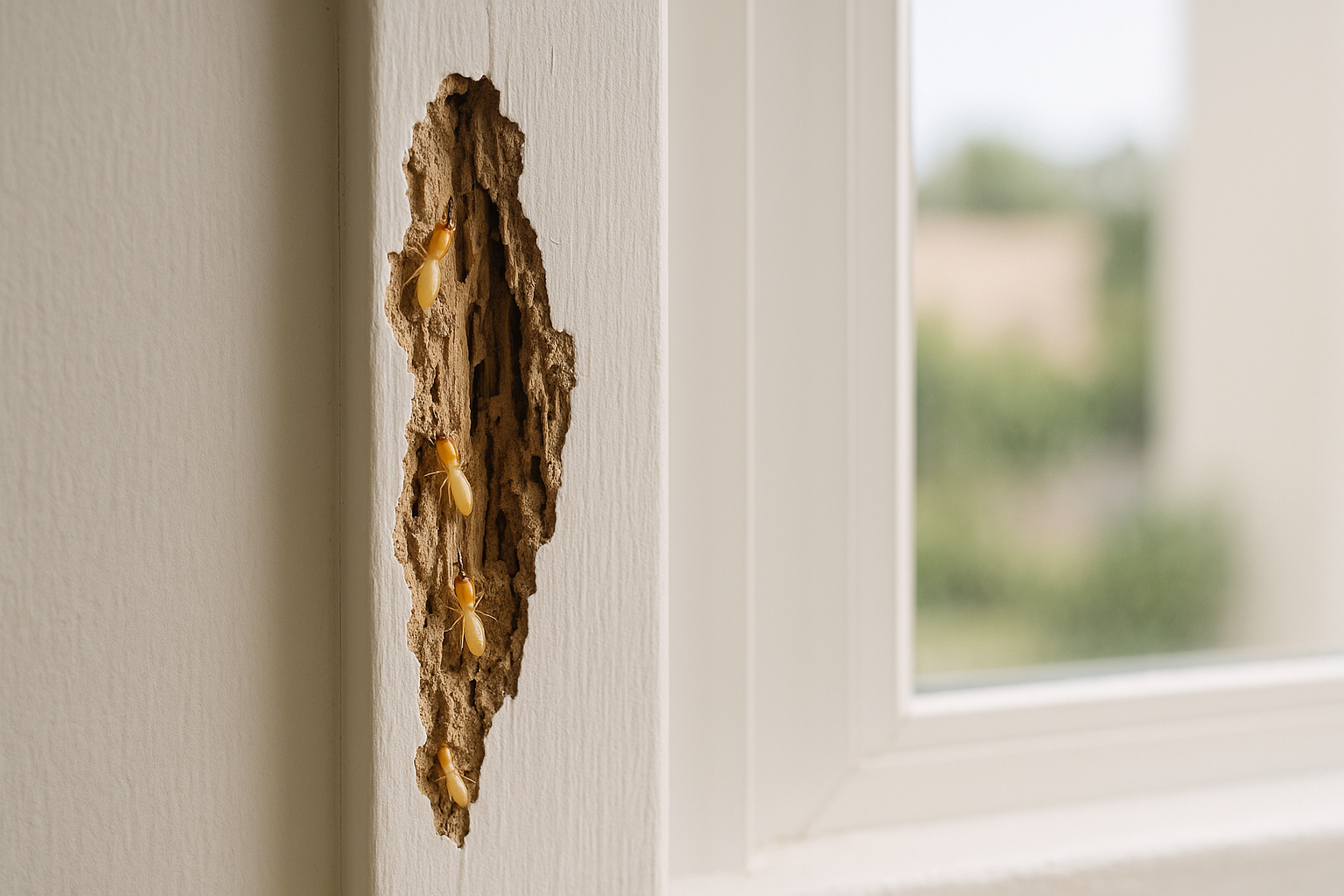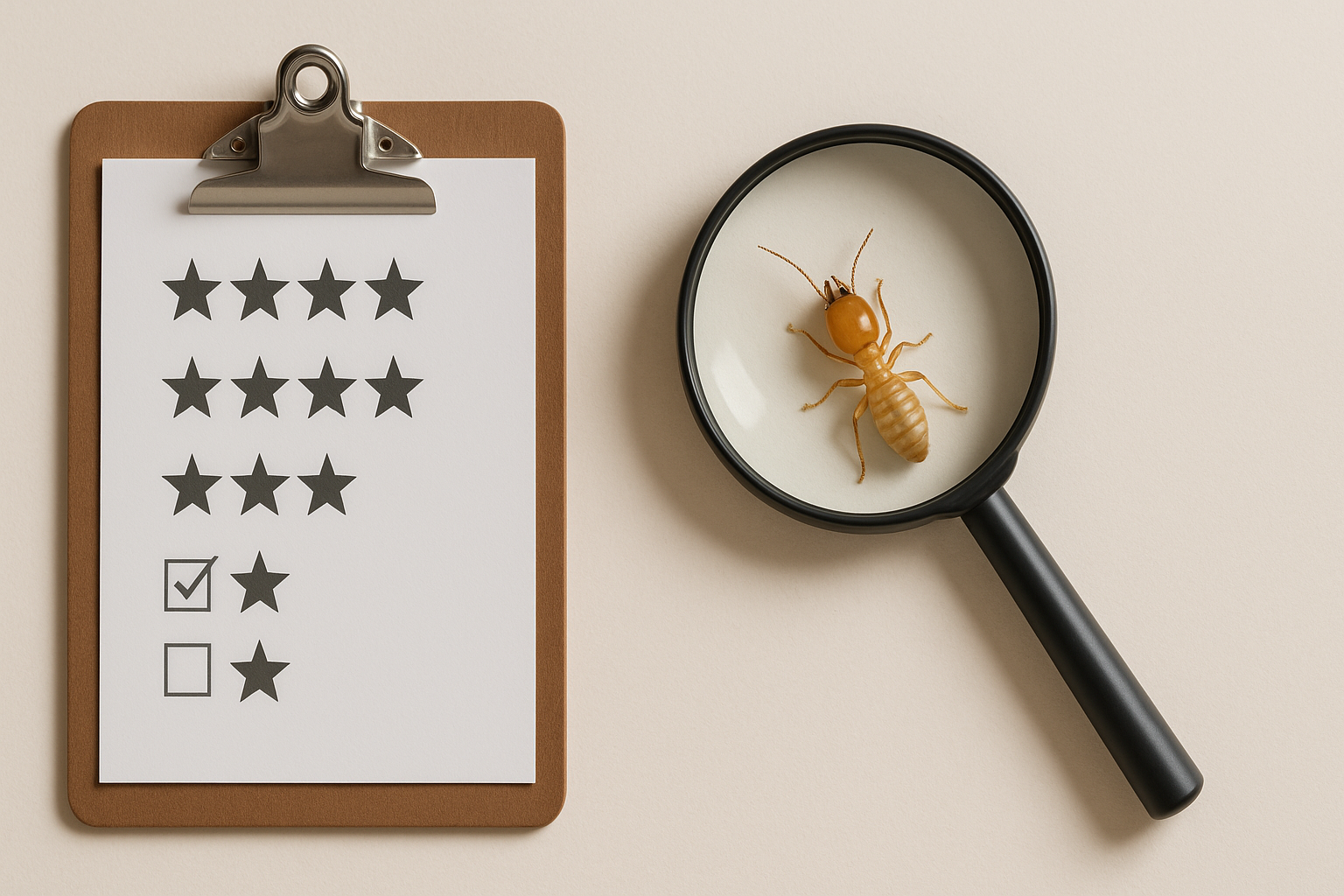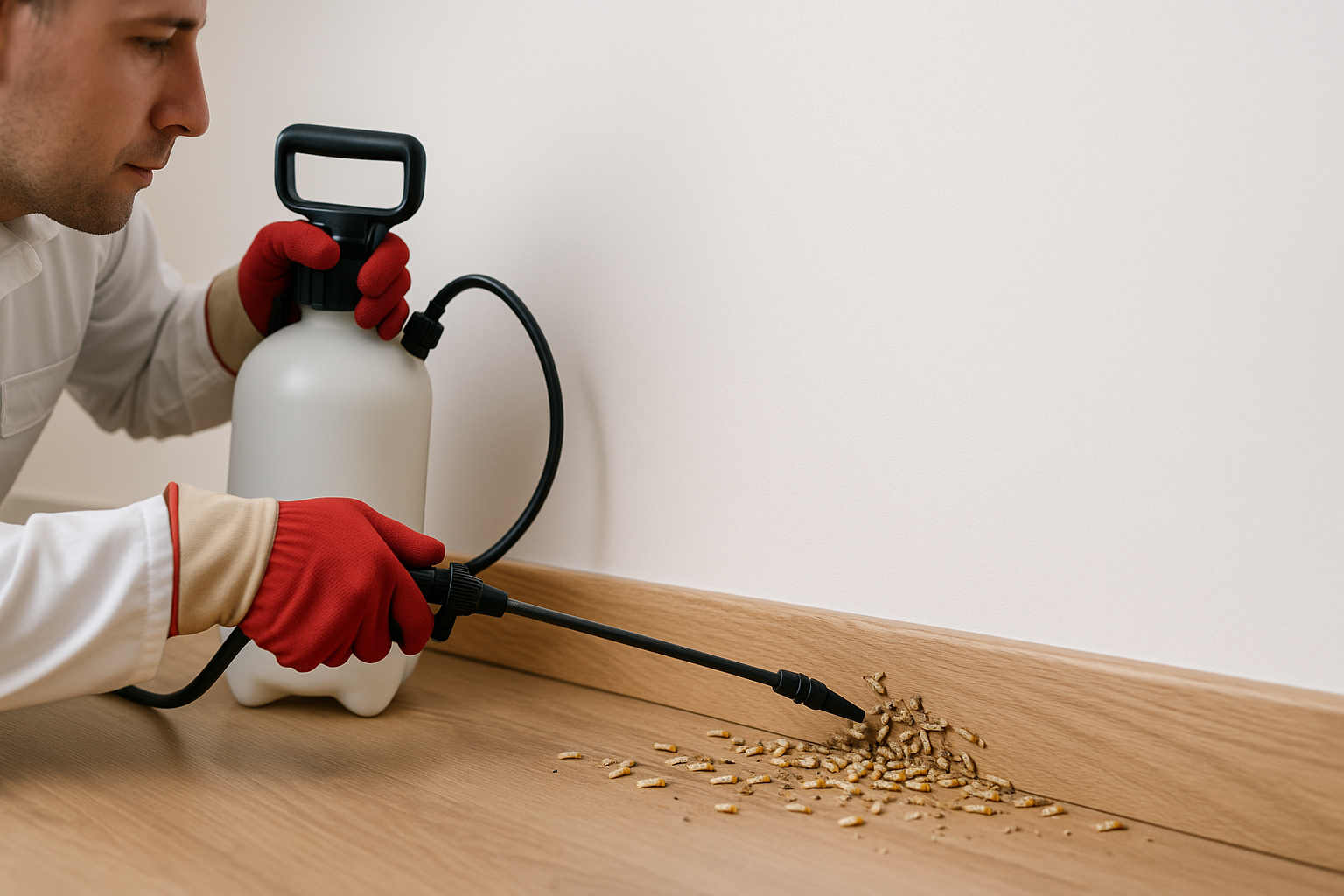Table of Contents
Termite Damage Overview in Al Khawaneej 2
The focus keyword termite damage risks Al Khawaneej 2 highlights an increasingly reported issue in this bustling Dubai locality. Situated in the eastern region of Dubai, Al Khawaneej 2 has seen rapid urbanization, which unfortunately also creates ideal conditions for termite infestations. Termites pose a continuous threat to residential and commercial properties, risking structural integrity and causing economic and safety concerns.
Understanding termite damage in Al Khawaneej 2 requires awareness of both environmental factors and construction types prevalent in the area. The desert climate combined with irrigation practices creates moisture pockets favorable for termite colonies. Properties with wooden foundations, fences, and furniture are particularly vulnerable to termite damage risks Al Khawaneej 2.
Common Termite Species Affecting Al Khawaneej 2
Awareness of local termite species helps residents and businesses prepare for targeted control measures. In Dubai, including Al Khawaneej 2, the most common termites fall into the categories of subterranean and drywood termites.
- Subterranean Termites: These live underground and build mud tubes to reach wood above the soil. They are the most destructive species in Dubai’s built environments.
- Drywood Termites: These termites infest dry wood without contact with soil. They attack wooden furniture, structural beams, and wooden fixtures common in Al Khawaneej 2 homes.
Understanding which species is involved in termite damage in Al Khawaneej 2 guides the choice of treatment and preventive strategies, as methods differ.
Key Risks and Signs of Termite Damage
The termite damage risks Al Khawaneej 2 extend beyond visible damage. Unchecked infestations can compromise building safety and cause costly repairs. Early detection is crucial for minimizing long-term impact.
- Structural Weakening: Termites feed on cellulose in wood, hollowing out crucial support beams and wall frames.
- Damage to Furnishings: Wooden furniture and fixtures can suffer irreparable harm, reducing property value.
- Increased Moisture: Termites often create moisture buildup, which can lead to mold and other secondary issues.
Common signs indicating termite damage risks Al Khawaneej 2 include:
- Mud tubes along walls and foundations
- Hollow-sounding wood when tapped
- Swarmers (winged termites) around windows or doors
- Discarded wings near entry points
Termite Treatment Options Available
When confronting termite damage risks Al Khawaneej 2, timely and effective treatment is essential. Several treatment methods are available tailored to various infestation levels.
1. Chemical Soil Treatment
This involves applying termiticides around the foundation to create a barrier protecting buildings from subterranean termites. It is a common preventive and curative measure in Dubai’s hot climate.
2. Wood Treatment Techniques
Treating wooden components with borate-based compounds or other insecticides protects drywood termite-prone areas.
3. Baiting Systems
Bait stations placed strategically around properties attract and eliminate termite colonies gradually, suitable for long-term control strategies.
4. Fumigation
For severe drywood infestations inside furniture or enclosed spaces, fumigation is effective but requires professional handling under Dubai Municipality regulations.
For residents and businesses interested in professional services, Saniex’s expert termite control for termite damage risks Al Khawaneej 2 offers specialized solutions designed to mitigate them efficiently.
Preventive Measures to Reduce Termite Damage Risks Al Khawaneej 2
Prevention is the smartest approach to managing termite damage risks Al Khawaneej 2. Implementing the following practices helps reduce infestation likelihood:
- Ensure proper drainage around the property to avoid moisture accumulation.
- Avoid wood-to-soil contact by using concrete or metal foundations for wooden structures.
- Regularly inspect wooden furniture and structures for signs of damage.
- Seal cracks and crevices in foundations and walls to block entry points.
- Use termite-resistant building materials where possible.
Adopting these practical steps can significantly lower the likelihood of termite damage in Al Khawaneej 2 and protect your investment.
Regulatory Standards and Guidelines in Dubai
Dubai Municipality, through its Public Health and Pest Control Section, enforces regulations aimed at controlling termite infestations and ensuring public safety. Pest control operators must follow strict guidelines regarding treatment substances, application methods, and disposal procedures.
Residents can learn more about Dubai Municipality’s pest control regulations and services aimed at reducing termite damage risks Al Khawaneej 2 at the official pest control section. Adherence to these standards is pivotal for effectively managing termite damage risks Al Khawaneej 2 and maintaining healthy living conditions.
Choosing the Right Pest Control Service in Dubai
When selecting a termite control service to address termite damage risks Al Khawaneej 2, consider the following factors:
- Certification and Licensing: Verify that the company is licensed by Dubai Municipality and complies with local regulations.
- Experience in Dubai’s Climate: Choose services with proven expertise in the unique environmental conditions of Dubai, particularly in localities like Al Khawaneej 2.
- Range of Treatment Options: Comprehensive services offering chemical treatments, baiting systems, wood preservation, and fumigation provide adaptable solutions.
- Customer Support and Follow-Up: Effective termite control includes routine inspections and responsive service post-treatment.
A trusted option is Saniex’s termite pest control services, focused exclusively on Dubai and tailored to combat these specific risks thoroughly.
Conclusion and Call to Action
Addressing termite damage risks Al Khawaneej 2 promptly and decisively safeguards your property’s structural integrity and value. Understanding the types of termites, recognized risks, and available treatment options empowers you as a property owner or manager in Dubai.
Implement preventive practices and engage professional, Dubai-licensed pest control experts to protect your home or business effectively. Act now to reduce termite damage risks Al Khawaneej 2 and secure a safe, comfortable environment.
For reliable, Dubai-focused termite control solutions, contact Saniex and take the first step towards a termite-free property.
Understanding Termite Damage Risks Al Khawaneej 2: Key Factors and Preventive Measures
Termite damage risks Al Khawaneej 2 pose a significant concern for homeowners and property managers due to the unique environmental and structural conditions in this rapidly developing Dubai locality. Al Khawaneej 2, known for its blend of residential villas and growing commercial establishments, sits in a region where termite infestations can cause extensive and often unnoticed damage. Addressing these risks effectively requires a comprehensive understanding of the local termite behavior, environmental influences, and construction challenges.
Environmental Conditions Favoring Termite Activity
Al Khawaneej 2 experiences climatic conditions typical of Dubai, characterized by hot temperatures, arid atmosphere, and occasional humidity, especially during the brief rainy season and near irrigation points. These environmental factors create an environment where certain termite species thrive, particularly subterranean termites, which are the main culprits behind structural damage in the UAE.
Subterranean termites depend on moist soil to survive, and although the overall climate is dry, irrigation systems used in landscaping in Al Khawaneej 2 can inadvertently create localized conditions that support termite colonies. These artificially maintained moisture zones around gardens and lawns provide a perfect habitat for termites to build their mud tubes and access wooden structures unnoticed.
Additionally, poor drainage in some older or underdeveloped plots can lead to retaining water near foundations, increasing the risk of termite infestation and damage. This means that while the climate might seem unfavorable to termites at first glance, local micro-environments within Al Khawaneej 2 can sustain active termite colonies and facilitate their spread into buildings.
Building Materials and Construction Practices Influencing Risks
The choice of construction materials and building methods in Al Khawaneej 2 significantly affects termite damage risks. Many villas and residential properties incorporate wooden elements such as framing, flooring, cabinetry, and other structural or decorative features. While modern construction increasingly uses termite-resistant materials, some older buildings and custom designs might still rely on untreated timber, which is highly vulnerable to termite attacks.
Common vulnerabilities include:
- Wood-to-soil contact: Direct contact between wooden structures and soil is a primary termite entry point, allowing subterranean termites to build tunnels and invade buildings.
- Untreated or poorly treated timber: Using timber without adequate chemical treatment or protective finishes increases susceptibility.
- Poor sealing around joints and utility penetrations: Gaps and unsealed areas can give termites easy access to the inner sections of walls and flooring.
- Storage of wooden debris near the home: Lumber, pallets, and discarded wood stacked close to buildings serve as food sources and breeding grounds for termites.
Dubai Municipality’s building guidelines emphasize proper foundation design and the use of termite barriers, yet the extent of adherence varies, especially in older developments. It is crucial for property owners in Al Khawaneej 2 to be aware of these risk factors to ensure adequate inspection and protection.
The Importance of Regular Inspections and Early Detection
One of the challenges with termite damage risks Al Khawaneej 2 is that infestations often go unnoticed until significant damage has occurred. Termites tend to work silently inside walls, under floors, or within hidden structural components, making visual detection difficult without professional tools and expertise.
Regular termite inspections, ideally conducted by licensed Dubai pest control companies like Saniex, are vital. These inspections focus on:
- Identifying early signs such as mud tubes, termite wings, and damaged wood.
- Checking moisture-prone areas and irrigation systems that could encourage termite activity.
- Assessing all points of wood-to-soil contact and structural weaknesses.
- Recommending appropriate treatment or preventive measures, including baiting systems or chemical barriers.
Early detection not only minimizes the risk of costly structural repairs but also helps maintain property safety and market value. In Dubai, where real estate investments are significant, the proactive management of termite risks aligns with Dubai Municipality’s property maintenance guidelines designed to protect both residents and infrastructure.
Preventive Measures Tailored for Al Khawaneej 2 Homes
Mitigating termite damage risks Al Khawaneej 2 involves a multi-layered approach. Dubai homeowners and property managers can take the following key preventive steps:
- Maintain proper drainage: Ensuring that water does not accumulate around foundations or under wooden structures reduces moisture availability for termites.
- Eliminate wood-soil contact: Build concrete or metal barriers under wooden decks, door frames, and fencing to sever termite access routes.
- Use termite-resistant materials: Where possible, select pressure-treated wood or composite materials that deter termite infestation.
- Regular landscaping management: Avoid thick mulch, remove dead roots, and keep garden irrigation systems well-maintained to prevent excess soil moisture.
- Professional chemical barriers: Licensed Dubai pest control providers can apply approved termiticides around building perimeters during construction or renovation phases to create a robust termite barrier.
- Routine inspections and monitoring: Establish yearly inspections with trained technicians and use baiting systems as an early warning tool.
Dubai’s stringent regulations under Dubai Municipality mandate proper pest management in construction and ongoing maintenance. Integrating these measures into your property management plan significantly reduces termite damage risks Al Khawaneej 2 owners face.
Long-Term Impact of Untreated Termite Infestations
Neglecting termite damage risks Al Khawaneej 2 can have irreversible consequences. Termites consume cellulose in wood and can compromise load-bearing structures, leading to:
- Weakened foundations and framing, increasing risk during high winds or seismic activity.
- Costly structural repairs and replacement of damaged materials.
- Reduction in resale value due to visible damage or infestation history.
- Potential health hazards from mold growth due to termite-compromised water barriers or damp wood.
In Dubai’s competitive real estate market, properties burdened by termite damage face marketability challenges. Obtaining clearance certificates through professional pest control assessments has become a standard expectation during property transactions.
Thus, managing termite damage risks Al Khawaneej 2 is not just about preservation but also about securing the long-term investment and safety of Dubai properties.
Conclusion: Proactive Strategies for Sustainable Property Protection
Addressing termite damage risks Al Khawaneej 2 requires informed awareness of the local termite ecology, diligent property management, and compliance with Dubai’s pest control standards. Combining environmental awareness with smart construction choices and routine professional inspections forms the cornerstone of effective termite control in this area.
For residents and property owners in Al Khawaneej 2, partnerships with specialized pest control companies based in Dubai, who operate in alignment with Dubai Municipality’s health and safety codes, ensure that termite threats are minimized, protecting both structure and investment for years to come.





